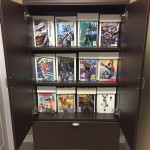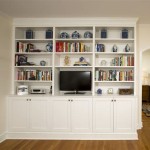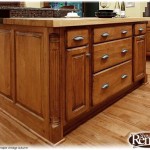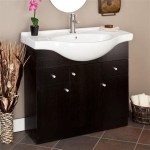Review of Primitive Corner Cabinet References in Five Nights at Freddy's 1
The original Five Nights at Freddy's (FNaF 1) is a landmark indie horror game, renowned for its simplicity, suspenseful atmosphere, and cryptic lore. While the game primarily focuses on animatronic jump scares and resource management via limited power, observant players have continuously dissected its environments for clues to the underlying narrative. Among the various details scrutinised are the seemingly innocuous props scattered throughout the security office. This article will delve into a particular category of these props: primitive corner cabinets, examining their potential significance within the game's context and their contribution to the overall ambiance.
Corner cabinets, in the context of design, are types of cabinet specifically designed to fit into the corners of a room, and primitive in this context signifies a more basic and less refined version of these cabinets, potentially suggesting an older or more rustic aesthetic. Their presence in FNaF 1 has sparked considerable speculation. These cabinets, though seemingly minor, contribute substantially to establishing the game’s setting and potentially offer subtle hints regarding the history and function of Freddy Fazbear’s Pizza. The following section will examine these references by looking at their visual presence, their potential symbolism, and the possible interpretations regarding their purpose within the restaurant.
Visual Presence and Context
Within the security office, the player is confined to a small, static space. The room's contents are limited but meticulously placed. The presence of what can be interpreted as a primitive corner cabinet, often appearing in a dimly lit corner of the office (depending on the specific angle or screenshot being considered), adds a layer of realism to the environment. It contributes to the feeling that the office is not just a sterile observation post, but a functional space that has been used for a considerable period. This is in contrast to a modern design, and the perceived age of the cabinet contributes to the sense of neglect that permeates the overall location.
The cabinets are often rendered in low resolution due to the game's age and stylistic choices. This lack of detail further enhances their primitive appearance, suggesting a simple, possibly homemade construction. Their placement generally implies a storage function. While their contents are never directly revealed to the player, this contributes to the player guessing at the purpose of the location. The cabinet's presence suggests that the space has storage purposes, and would have had items related to night security guard duties stored there. This could range from cleaning supplies to employee instruction manuals and potentially even obsolete equipment.
The colour palette associated with these cabinets (often muted browns and greys) fits seamlessly with the rest of the office's aesthetic, which is characterized by a general sense of wear and tear. This colour scheme enhances the feeling of age and disuse, reinforcing the narrative that the player is occupying a space that has seen better days. This further establishes the overall horror tone of the game.
Potential Symbolism and Interpretations
The existence of primitive corner cabinets, beyond their aesthetic value, may be considered symbolic. Firstly, the "corner" aspect of the cabinet is in itself a significant point to consider. Corners in architecture often represent boundaries or limitations. The cabinet is confined to a corner, and the player is confined to the security office. This could symbolize the limited control or agency the player has within the game's narrative. The player cannot move freely through the restaurant, and they are forced to defend themself from a restricted viewpoint.
Secondly, the "primitive" nature of the cabinet can be interpreted as representing the past. The restaurant itself seems to operate on outdated technology and principles, and the presence of these cabinets reinforces the idea that the location is stuck in a bygone era. This is further supported by the archaic animatronic designs, and suggests a failure to adapt. The emphasis on an older style of design serves to contrast with the more modern horror that emerges from the animatronics, making the player question what has been going on, and creating a feeling of uncertainty.
Furthermore, the act of storing items within a cabinet is often associated with concealing secrets or preserving memories. While the contents of the cabinets are never revealed to the player, their potential to hold hidden information adds another layer of mystique to the game. This is something the player must think about. Could they contain documents relating to the restaurant's troubled history? Could they hold forgotten tools or parts that are related to the animatronics themselves? Such questions contribute to the depth and complexity of the narrative, motivating to dig deep into the game's world.
Possible Purpose within the Restaurant
Speculating on the purpose of these cabinets within the context of Freddy Fazbear's Pizza is crucial to understanding their broader significance. As previously stated, a primary function would likely be storage. The security office would require a space to store necessary items. Given the limited space, a corner cabinet would be a practical solution.
One theory posits that these cabinets might have contained emergency supplies, such as first-aid kits or repair tools for minor equipment malfunctions. Considering the animatronics are known to malfunction, a storage place for tools to fix them is not unlikely. The cabinets might also have held spare parts for the security systems themselves, ensuring the night guard had some means of addressing technical issues that might arise during their shift.
Another possibility is that the cabinets were used to store documentation. This could include employee handbooks containing safety protocols, maintenance schedules for the animatronics, or logbooks for recording incidents that occurred during the night shifts. These documents could be of great plot significance, and the fact that the player does not get to see them adds to their importance in the player's mind.
It is also conceivable that the cabinets served as personal storage for the night guards themselves. Given the long shifts involved, the guards might have used the cabinets to store personal belongings, such as food, drinks, or reading materials. While seemingly mundane, this detail would further contribute to the realism of the environment, making the player feel as though they are genuinely occupying a functional workspace. The space to have personal belongings could explain why the character has returned to the role. Ultimately, the exact purpose of the cabinets remains unconfirmed but the possibility is essential to understanding the way the player relates to the location.
The cabinets also help to flesh out the history of the location. While the original game lacks in-depth narrative exposition, the small details in locations such as the security office encourage players to speculate on the past of the establishment. The age and type of cabinets help to establish that the location is an old restaurant that has seen better days, and its history would lead to the events that the player is involved in. This sense of history and past events is a significant portion of what makes the game so scary, because players are forced to try to piece together a dark plot from the smallest clues.
The existence of these cabinets also emphasizes the lack of resources within the location. The player lacks a lot of different tools and information during the game, so the cabinet's simple act of existing causes the player to think about what could be inside. If certain items were in those cabinets, it would make the game a lot easier on the player. The mystery associated with the cabinets adds to the overall difficulty of the game, and it is a small detail, but a noticeable one.

The Theater Fnaf Secret Of Mimic Guide Ign

The Theater Fnaf Secret Of Mimic Guide Ign

Canon Information Fnaf Theories Wiki Fandom

The Ultimate Fnaf4 Guide Part 1 Fnaf Network

Canon Information Fnaf Theories Wiki Fandom

Canon Information Fnaf Theories Wiki Fandom

The Theater Fnaf Secret Of Mimic Guide Ign

Ms Dr Professor Jessica On Game Jolt Ultimate Custom Night Review A Little Bow To Close Off This Era

The Theater Fnaf Secret Of Mimic Guide Ign

The Theater Fnaf Secret Of Mimic Guide Ign
Related Posts








